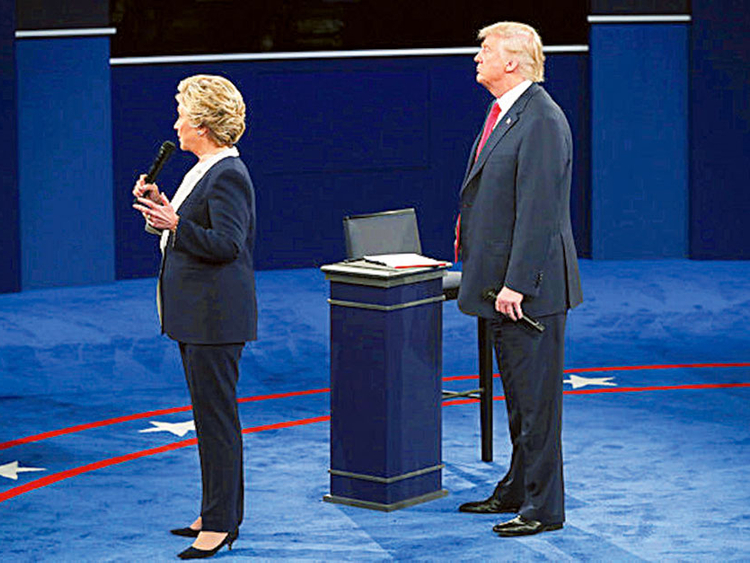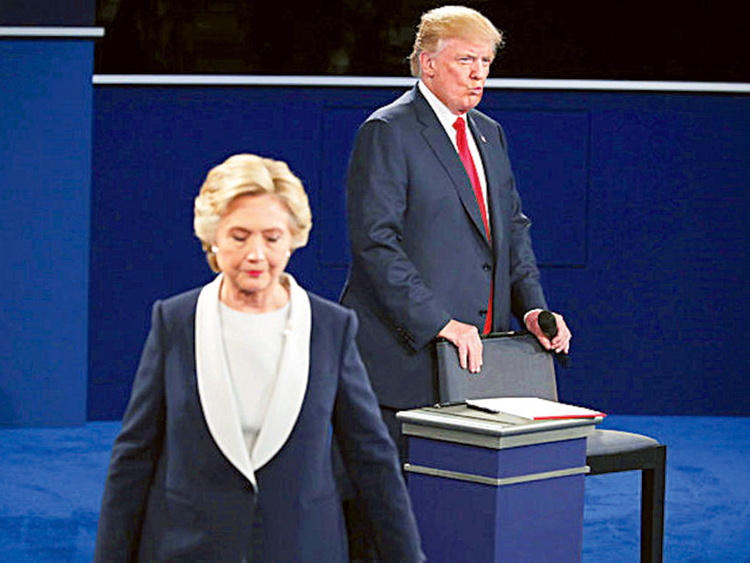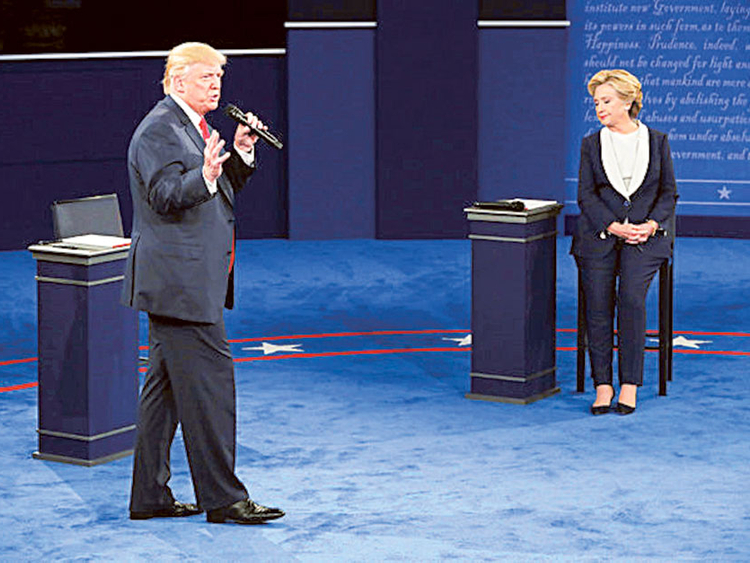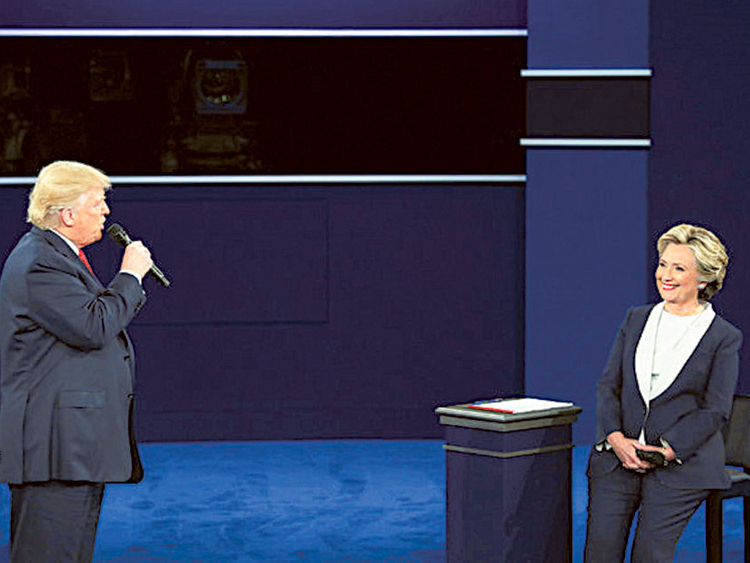Too close for comfort
As Hillary Clinton detailed her health care plan, the Republican nominee inched closer and closer to her until he was standing right behind her and swivelling while she spoke.
Ruth Sherman, a public speaking expert who analyses body language, observed that the forces of “proxemics” — a term that describes how people communicate using space — were at play during the debate. It appeared that Donald Trump was trying to exert dominance over Clinton by standing close and towering over her.
“The proximity to Clinton with which he stood behind her at certain points was particularly threatening,” she said.
Gripping the chair
One of Clinton’s more effective assaults on Trump’s credibility came when she took him on over his tax plan and his penchant for avoiding taxation.
As she delivered an extended monologue on the subject, Trump paced around the stage, clenching his microphone, before finally returning to stand behind his chair. He held the back of the chair, swaying forward, backward and to the sides as Clinton told voters that he wanted to raise taxes on millions of middle-class Americans.
The freedom to roam the stage led to frequent fidgeting by Trump and the appearance at times that he was stalking Clinton like prey.
“This was a conscious assertion of power,” Sherman said, noting how Trump tended to loom behind Clinton as she answered questions. “He was very distracting while she was speaking — walking around, fidgeting, swaying, leaning on his chair.”
Don’t look down now
During one heated sequence, Trump unloaded a barrage of verbal attacks on Clinton, arguing that the Democratic Party’s nominating process was rigged and expressing surprise that Senator Bernie Sanders “signed on with the devil” to support her. After he accused Clinton of acid washing her emails, she broke into a smile, shook her head in disgust and lowered her eyes.
Sherman said that some of Clinton’s subpar reviews could be the result of how she carried herself on the stage, clenching her thumb against her forefinger while speaking and looking down more than usual.
“It’s something people do when they’re thinking, but I think it conveyed a bit of defensiveness,” Sherman said.
Putting on a game face
Presidential candidates are rarely assailed to their faces, so debates are an exercise in controlling the tendency to recoil or grimace when insults are coming from close range.
A more practised debater, Clinton tended to maintain a blank expression even as Trump brought up painful allegations against her husband, former President Bill Clinton. On occasion, such as when he pointed and said that she “has tremendous hate in her heart,” Clinton widened her eyes incredulously and smiled with astonishment.
According to Bart Rossi, a political psychologist and body language expert, Trump’s facial expressions were more revealing. The disdain that he feels for his opponent could not have been clearer.
“He had almost a frightful face at times,” Rossi said, pointing out how Trump’s brow remained furrowed as he squinted for much of the debate. “He was agitated and angry.”
















